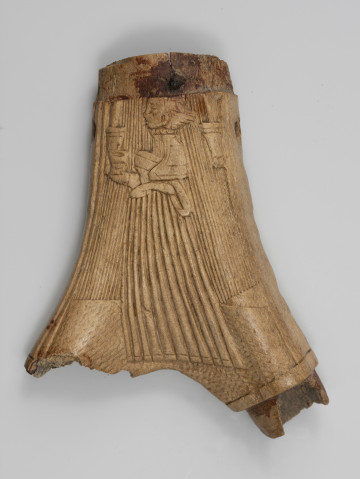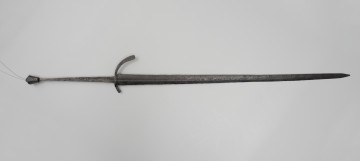
Powder box
1501 — 1600
National Museum in Szczecin
Part of the collection: Graphics of German speaking countries
The composition by Ludwig Heinrich Jungnickel depicts two fiercely fighting roosters. The graphic was done in late 1915/1916 using etching and dry point technique and printed on handmade ribbed paper with the watermark of the Van Gelder Zonen-Papier paper mill. The watermark depicts a lily on a shield under a crown of lilies and the initial VGL below. The print comes from the annual portfolio of graphics for 1916(?) containing works by several artists. The portfolio was published as an art supplement by the Viennese magazine “Gesellschaft für vervielfältigende Kunst”, issued by the association of the same name, which was dedicated to the promotion and dissemination of printmaking.The theme of cockfights has been depicted in art since the Renaissance. They were painted by highly regarded 17th-century Dutch artists who specialised in animalistic depictions, i.e., scenes with animals as the protagonists. These included Frans Snyders (1579-1657) and Melchior Hondecoeter (1636-1695). In England and Germany, the subject was taken up in the 19th century. Henry Alken (1774-1850) included a cockfighting scene in his cycle Sporting Sketches published in London in 1817, and Wilhelm Busch (1832-1908) made such a composition around 1900. Jungnickel dealt with cockfighting several times, using various artistic techniques: watercolour, pencil drawing under watercolour, and lithography. The composition discussed here was repeated in a mirror image in 1923. Ludwig Heinrich Jungnickel was born in 1881 in the Franconian town of Wunsiedel and died in 1965 in Vienna. He studied at art colleges in Munich and Vienna. From 1906 he worked as a designer for the Vienna Workshop art association. The decoration of the Art Nouveau Stocklet Palace in Brussels is considered his most important work. He willingly used the woodcut technique. From 1908, he specialised in animal motifs.
Ewa Gwiazdowska
Author / creator
Dimensions
cały obiekt: height: 388 mm, width: 288 mm
Object type
graphic
Creation time / dating
Creation / finding place
Identification number
Location / status

1501 — 1600
National Museum in Szczecin

circa 1390 — 1450
National Museum in Szczecin

1701 — 1800
National Museum in Szczecin
DISCOVER this TOPIC
National Museum in Lublin
DISCOVER this PATH
Educational path